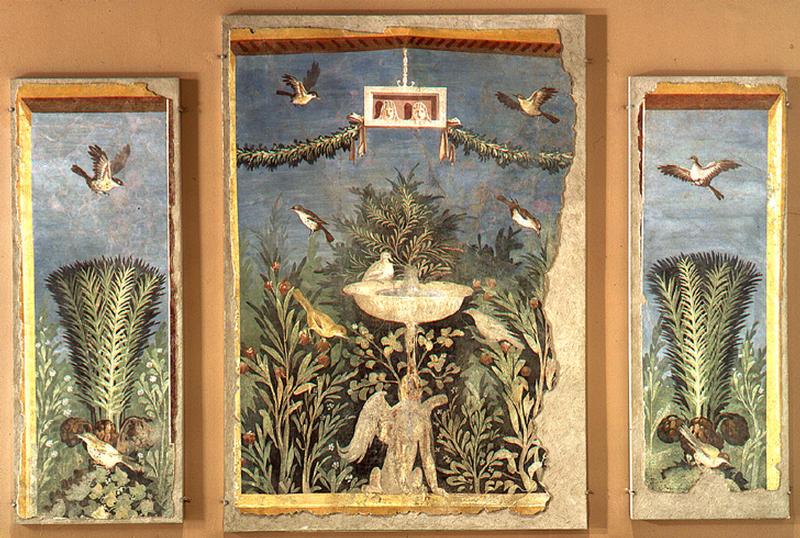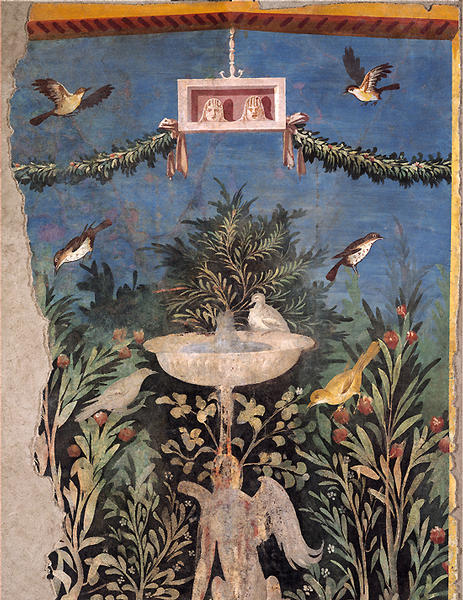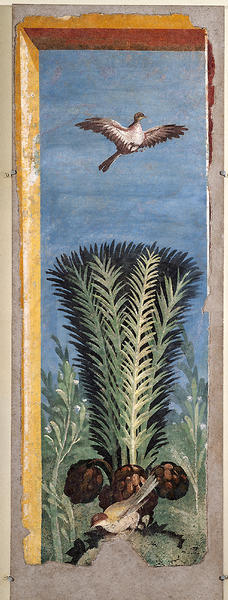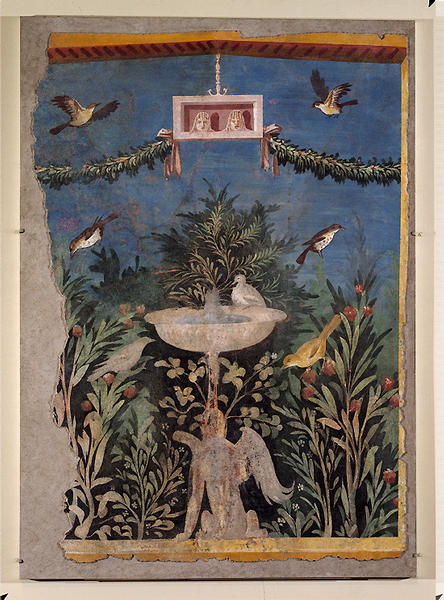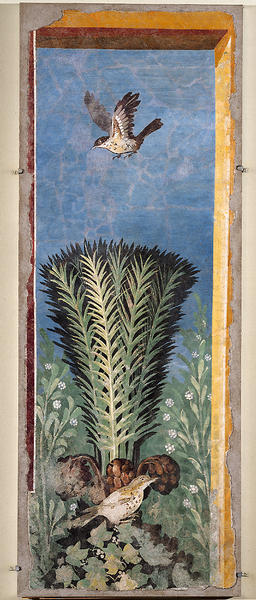Fresco Panels Depicting a Garden
- Roman
- Roman
- 1st century
- Fresco
- H-162.9 W-114.9
Catalogue Entry
One of the most delightful categories of Roman wall painting in the late Republic and early Empire is the so-called garden paintings. 1 These were especially popular during the Third and Fourth Styles--that is, from the last decades of the first century B.C. to about the end of the following century. Evidently produced by a leading Campanian workshop active in the Vesuvius area, all three of these fresco panels are similarly framed and in all probability came from the same room, if not the same wall. 2 Narrow bands of reddish brown, white, and golden yellow enclose the scenes in each panel, which are drawn in perspective to suggest that they are framed windows through which views of a blossoming garden are visible. This type of painting most often decorated the back wall of the peristyle of an outdoor garden, and the desired illusionistic effect was to extend the idyllic landscape well beyond the confines of the house.
Every iconographic and decorative detail preserved in the three panels finds a strong parallel in other Pompeian wall paintings. The broadest panel (B) is dominated by a bubbling marble fountain in the form of a crouching sphinx surmounted by a round-footed basin. An abundance of flora and fauna is depicted in such realistic detail that most specimens can be identified with certainty. We encounter tall oleanders as well as myrtle in bloom. A pigeon rests on the edge of the fountain, and six songbirds appear either to be perched on the shrubs or in flight. A rectangular marble plaque, or pinax, with two theater masks carved in relief against a painted reddish background hangs from the frame at the top. Symmetrical garlands of flowering myrtle are attached to the lower corners of the pinax by means of red fillets. This and other types of marble sculpture typically were suspended between the columns that lined the peristyle gardens of Pompeian houses.
The two slender panels (A and C) each feature a date palm with clusters of brown fruit and a pair of birds, one flying across the pale blue sky and the other stepping on a mound of ivy adorned with bunches of white flowers. To the Romans, the date palm symbolized victory and immortality, which may explain why the plant is consistently represented with everlasting and luxuriant new growth, its lower tier of leaves having been cut off. 3
CAP
1. For the fullest and most recent study see Jashemski 1979, pp. 55-87; for a catalogue of garden paintings from the Roman world see Jashemski 1993, pp. 313-404. See also Ling 1991, pp. 149-53, 230 (references).
2. Ex collection George Ortiz, Geneva.
3. On the symbolism of date palms and other flora see Conticello 1990, pp. 235-38.
